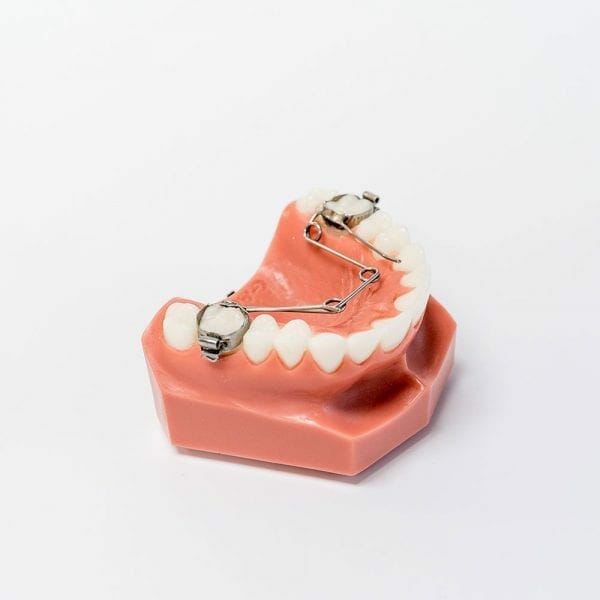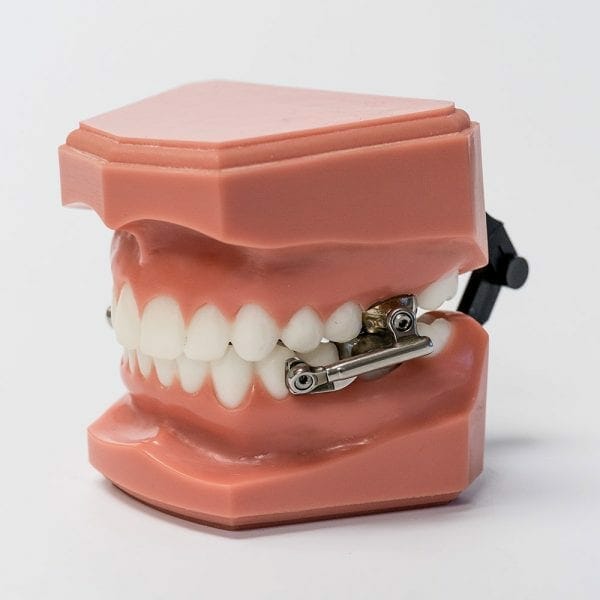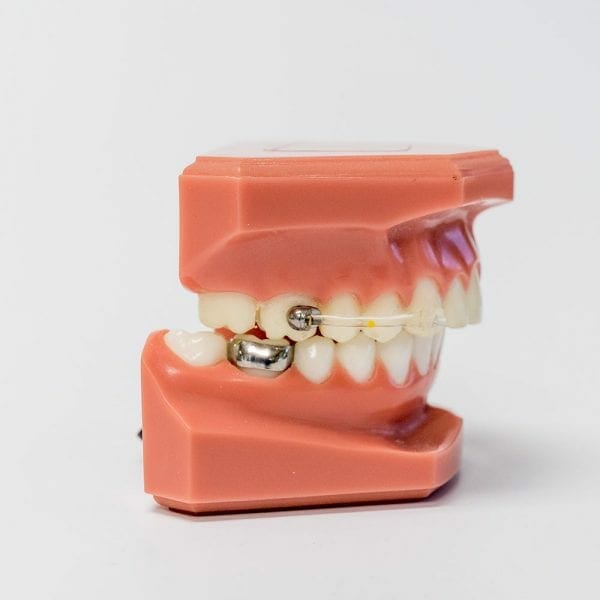What Is An Overbite?
Almost everyone has top teeth that slightly overlap their bottom teeth. However, when the overlap is significant or protrudes excessively over the bottom teeth, this is called an overbite. To be classified as an overbite, the upper teeth must protrude forward over the lower teeth by more than 3 millimeters.
An overbite is a type of malocclusion, which is the medical term for the abnormal relationship of the upper and lower teeth. A malocclusion is just a fancy term for a bite problem. While orthodontists refer to overbite as excess vertical overlap of front teeth, lay persons usually use overbite to describe excess horizontal space between the upper and lower front teeth.
An overbite in kids is quite common. According to the American Dental Association, almost 70% of children have some type of overbite. Some overbites (especially in young children) improve on their own as the child grows and develops. However, around the age of 7, children should see an orthodontist to assess their bite.
What Is the Difference Between An Overjet and Overbite?
While dentists and laypeople have different meanings for overbite, it can be helpful to understand the difference between overjet and overbite. An overbite occurs when the upper teeth overlap the bottom teeth in the vertical place of space by more than 3 millimeters. With an overjet, the teeth on the upper jaw set forward of the lower teeth in the horizontal direction. To put it another way, the upper front teeth protrude outward. This is sometimes called “buck teeth.”
The primary difference between these two bite problems is that an overbite focuses on the depth of the bite while an overjet focuses on how far the upper front teeth protrude.

What Is the Difference Between an Overbite and Underbite?
The difference between an overbite and underbite is a bit easier to explain. While an overbite happens when the top teeth set forward of the lower teeth, the opposite is true with an underbite. An underbite occurs when the lower teeth set forward of the upper teeth, creating a bulldog-like appearance.
What Causes an Overbite In Children?
The most common cause of an overbite is the shape and size of the jaw or teeth. These issues can have skeletal causes (mismatched jaw size) where the upper jaw sets too far forward, or the lower jaw sets too far back (or a combination of the two). There are also dental causes such as the upper teeth tilting too far forward or when lower teeth are naturally missing.
Many overbites have a genetic cause and run in the family. However, some behaviors can also cause an overbite. For example, a toddler overbite may be caused by thumb-sucking, pacifier use, or tongue thrusting (pressing the tongue too far forward in the mouth). In older children, overbites can be caused by a continued thumb or finger sucking habit.
Preventing Overbites In Children
Because a toddler overbite can be formed by pacifier use or thumb sucking, it is possible to prevent an overbite from becoming too serious by taking the following steps.
- Limit pacifier use. Although pacifiers have a time and place, it is important to limit the use of a pacifier around the age of 3. Ideally, the child will be weaned off a pacifier at this age.
- Choose the right sippy cup. The American Dental Association cautions against the use of traditional spill-proof sippy cups, which involve sucking on a spout to bypass the spill-proof valve. Excessive use of these types of cups can lead to an overbite and other dental issues. Instead, consider using a small “adult” cup or a sippy cup with a “360” lid. If a child is already using a traditional sippy cup, limit the use to mealtimes only.
In older children, the following can be considered:
- Evaluate tongue positioning. During a visit to a dentist, ask the dentist to evaluate the child’s resting tongue position. This can identify potential problems with tongue thrusting.
- Consider habit appliances. An orthodontic appliance called a habit appliance can help stop chronic thumb or finger-sucking problems. It is successful about 90% of the time.

What Issues Can Overbites in Children Cause?
A serious overbite that is left untreated can lead to a wide variety of problems, including:
- Abnormal wear of tooth enamel
- Social concerns with appearance
- Damage to the palatal soft tissue
- Difficulty chewing and eating
- Speech problems
- Trauma to the upper front teeth
How to Fix an Overbite in Children
Starting around the age of 7, Dr. Redford and Dr. Burke can evaluate a child to identify bite and teeth issues. Treatment in kids that still have baby teeth present is called “interceptive orthodontics.” The goal of this early orthodontic treatment is to fix developing problems earlier rather than later.
Because a child’s mouth and jaw are still developing, it is possible to achieve results in younger patients that are sometimes not possible in older teens and adults. As a result, more invasive and expensive problems can be avoided when the child gets older.
With younger children, sometimes a simple retainer can be used to tip back the upper front teeth. This is a straightforward, cost-efficient way to correct a tooth position problem. In older kids and with large overbites, orthodontists often use overbite correction devices (sometimes called growth modification devices or functional appliances). There are two effective orthodontic appliances used in our practice to correct overbites in kids—a Herbst Appliance and a Carriere Distalizer.
- Herbst Appliance. Used to correct moderate or severe overbites, this appliance is a fixed brace that positions and then holds the lower jaw forward. Metal rings (called crowns) are cemented to the upper and lower back molars. Two telescopic attachments (called jigs) are then inserted. These attachments help to bring the lower jaw forward. The device is usually worn for 6 to 8 months. This appliance is a more discreet alternative to traditional headgear and requires much less patient compliance.

- Carriere Distalizer. This device corrects mild to moderate overbites by shifting lower teeth forward and upper teeth back. The appliance consists of a curved bar that is attached to a canine tooth and a molar tooth the side of the upper teeth. Attachments are also placed on the lower back molars. Elastics are then used to produce a force strong enough to move the top and bottom teeth into alignment. The curved bar can be metal or clear, with the clear option making the device almost invisible. The appliance is typically in place for 6 to 8 months and requires excellent patient cooperation wearing elastics.

In more mild cases, an overbite can be corrected using braces or Invisalign for teens and elastics alone. During the initial consultation, Dr. Ryan Redford or Dr. Burke will conduct a thorough clinical exam (including x-rays) to determine the orthodontic issues that need to be addressed. The doctors will then recommend a treatment plan to address the unique orthodontic needs of the child.
To schedule a free consultation to discuss an overbite in children and orthodontic options for your child, contact Burke & Redford Orthodontists in Temecula or Lake Elsinore by calling our main office at (951) 699-8011 or fill out the free orthodontic consultation form on our website.